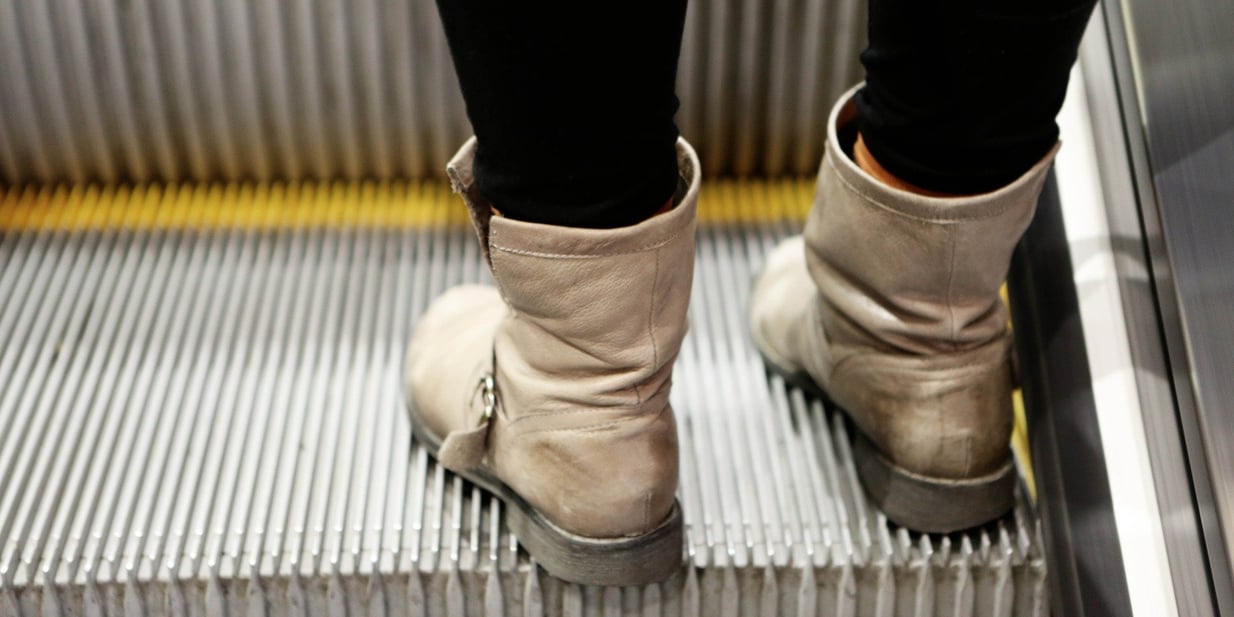
Why Slow Retail WiFi is Leaving Money on the Table | WiFi SPARK
WiFi changed the face of many industries, including the retail sector. Despite this, some businesses believe providing free WiFi isn’t worth the expense and...
Read more

Over the past few years, retailers have realised that in order to maximise profits, they have to endorse smart marketing. This works perfectly for online trading as you can easily see customer journeys and track their behaviour, however offline it’s near impossible to track, measure and analyse the exact point of sale.
So, in order to help them with their efforts, various different technologies have been released to track customer footfall. Retailers often measure this using sensors. WiFi data is far superior to different technologies. With this technology, businesses can track peak hours to match their staffing patterns, measure basic sales conversions and assess how many customers return to their stores.
But how can footfall be measured more accurately? In short, WiFi can help collate your data, which will help strengthen your findings and hopefully lead to maximising profits. Here's how WiFi can help you track a retail centre's footfall more precisely:
WiFi-based footfall tracking technology allows retail centres to look into data in much more depth than other methods. It isn’t limited to just a footfall count either. Other insight includes behavioural trends, frequency and peak usage.
For example, how many repeat or first-time customers have entered your store over a set time period, their journey and how they browse items around the store and where they tend to idle and linger. It also allows you to see how long customers spend in stores and even how many people pass by without entering.
It’s important to track shopper behaviour as it allows you to tailor campaigns specifically based on your store’s trends and shopper habits. By tracking the rate of first-time customers entering your retail centre, it can give you an idea of how appealing your window display may look. It’ll allow you to see which campaigns are doing well and which aren't. For example, discount offers in the window are likely to attract new customers and entice shoppers to enter specific stores.
WiFi can produce richer and more accurate data than other methods. Methods such as laser beams and thermal image trackers tend to create restricted, one-dimensional findings. This is due to them not being developed enough and having the correct capabilities. For example, laser beams in store entrances can’t distinguish when groups of people walk in and out together. Plus, they can also mistake prams and trolleys for extra shoppers too, leading to inaccurate results.
In contrast, WiFi can produce analytics such as heatmaps. With WiFi enabled on shoppers devices, the system will recognise new and returning shoppers individually per device. The centre can then access information such as where these devices linger and the common paths they may take around the building.
More sophisticated use cases are assessing locations for products that lead to higher revenue or analysing customer needs in shopping centres and optimising their shopping experience. This will then allow the retailer to see which of their products are most popular and which ones aren’t selling so well.
It will also allow them to see which areas of the retail centre feature concessions, stores and promotional marketing material that are being noticed more and which sections are being overlooked. This can help shopping centres when they're selling retail or advertising space.
For example, they can charge more for spaces that are in high footfall areas and maximise revenue even further.
WiFi has become so advanced now that it can recognise devices that have previously entered the centre and connected to the WiFi. So, when customers enter a retail centre, their devices can automatically connect to the WiFi - without them needing to do it themselves. If you've deployed WiFi via the same provider throughout your retail centres up and down the country, it can also recognise returning shoppers - even if they haven't visited a specific centre before.
Customer recognition is a huge benefit for retailers. You’ve seen what it can do online; it allows businesses to target their marketing towards their customers and help provide a more personalised experience. While the aim isn't to form your whole retail centre around one shopper, you can look at group trends and demographics that will help you position your offerings in a more tailored way.
Ultimately, this will help encourage shopper loyalty, repeat business and maximise revenue.
Find out more about how you can become more connected to your customers than ever before and how you can use data to understand customer behaviour to maximise profits. WiFi SPARK can help stores drive shopper loyalty too. If you’re not convinced, take a closer look at how it can be applied with our Peel Group case study below.

WiFi changed the face of many industries, including the retail sector. Despite this, some businesses believe providing free WiFi isn’t worth the expense and...
Read more

WiFi is not just for your IT department to concern themselves with. In the marketing team, you should be using your WiFi to promote your brand. With nine...
Read more

WiFi is an important consideration for guests looking for a restaurant to eat at or a hotel to stay in. In the UK alone, 82% of people travelling see...
Read more